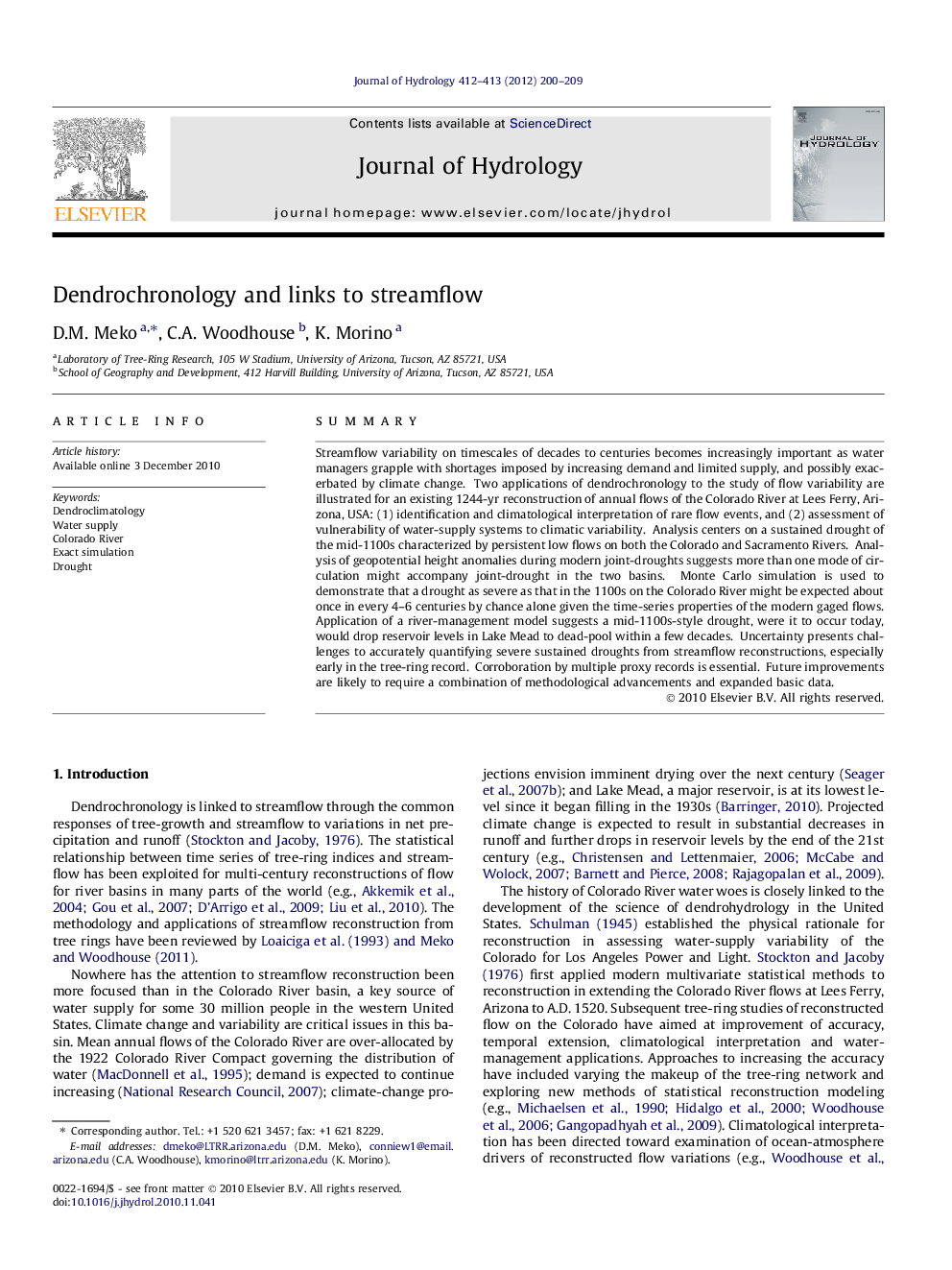| Article ID | Journal | Published Year | Pages | File Type |
|---|---|---|---|---|
| 4577295 | Journal of Hydrology | 2012 | 10 Pages |
SummaryStreamflow variability on timescales of decades to centuries becomes increasingly important as water managers grapple with shortages imposed by increasing demand and limited supply, and possibly exacerbated by climate change. ► Two applications of dendrochronology to the study of flow variability are illustrated for an existing 1244-yr reconstruction of annual flows of the Colorado River at Lees Ferry, Arizona, USA: (1) identification and climatological interpretation of rare flow events, and (2) assessment of vulnerability of water-supply systems to climatic variability. ► Analysis centers on a sustained drought of the mid-1100s characterized by persistent low flows on both the Colorado and Sacramento Rivers. ► Analysis of geopotential height anomalies during modern joint-droughts suggests more than one mode of circulation might accompany joint-drought in the two basins. ► Monte Carlo simulation is used to demonstrate that a drought as severe as that in the 1100s on the Colorado River might be expected about once in every 4–6 centuries by chance alone given the time-series properties of the modern gaged flows. Application of a river-management model suggests a mid-1100s-style drought, were it to occur today, would drop reservoir levels in Lake Mead to dead-pool within a few decades. ► Uncertainty presents challenges to accurately quantifying severe sustained droughts from streamflow reconstructions, especially early in the tree-ring record. ► Corroboration by multiple proxy records is essential. ► Future improvements are likely to require a combination of methodological advancements and expanded basic data.
Research highlights► The mid-1100s is a model for devastating hydrologic drought in the western US. ► Exact simulations highlight the risk of drought on the Colorado River. ► Persistent drought on the Colorado River could arise from today’s climate variability. ► Recurrence of medieval-period drought would rapidly lower Lake Mead to dead pool.
